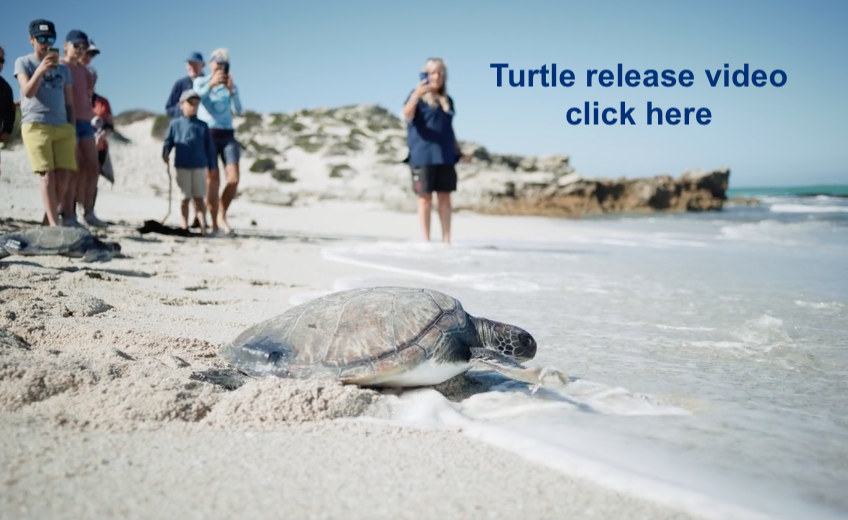We love sharing positive news, and this conservation success story fits the bill. Our Morukuru Goodwill Foundation (MGWF) has been working alongside the Two Oceans Aquarium Foundation’s Turtle Conservation Centre team and the Cape Nature Rangers to give two green turtles a second chance in the wild.
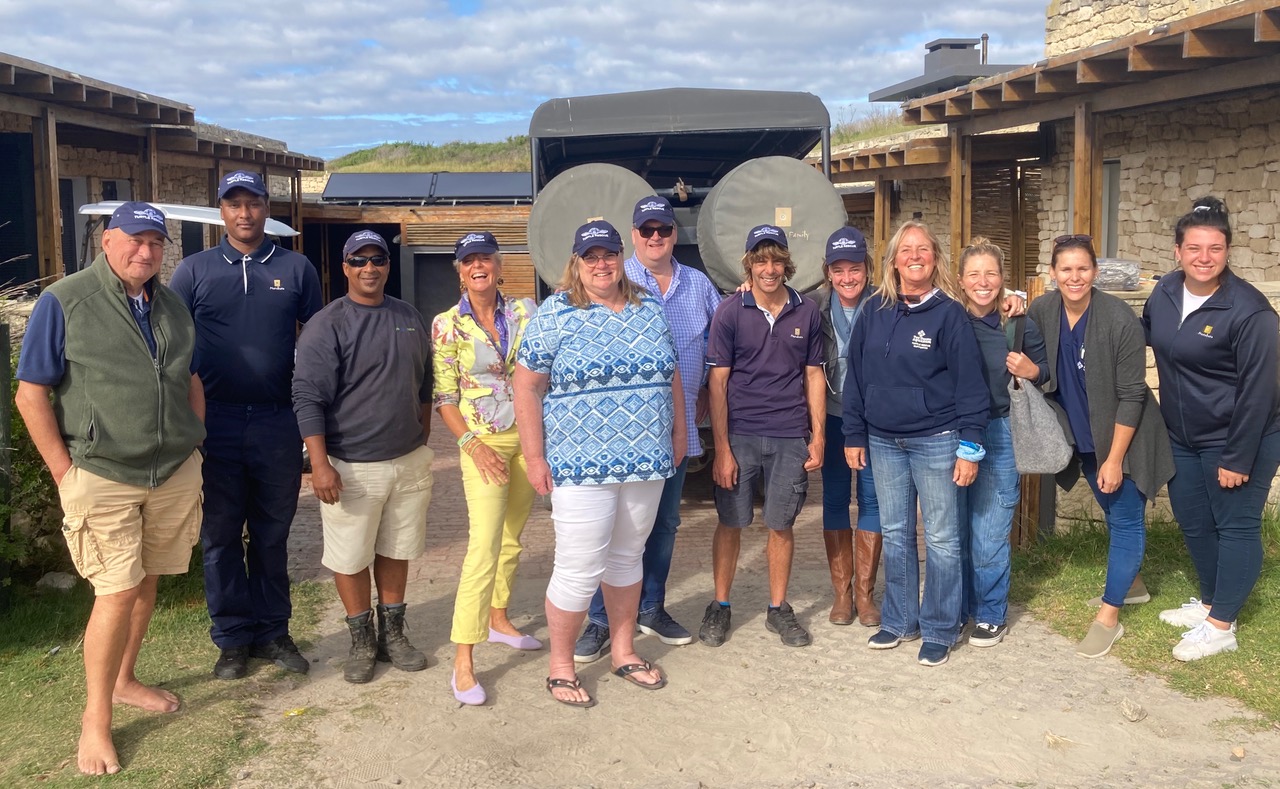

Meet Amigo and Zelena! Both were rescued from the stretch of coast bordering Morukuru Family De Hoop and have now been reintroduced into the De Hoop Marine Protected Area (MPA) of the De Hoop Nature Reserve. This is the first time that turtles have been released in this area. We are thrilled to say that the De Hoop MPA is an ideal place to release rehabilitated turtles.
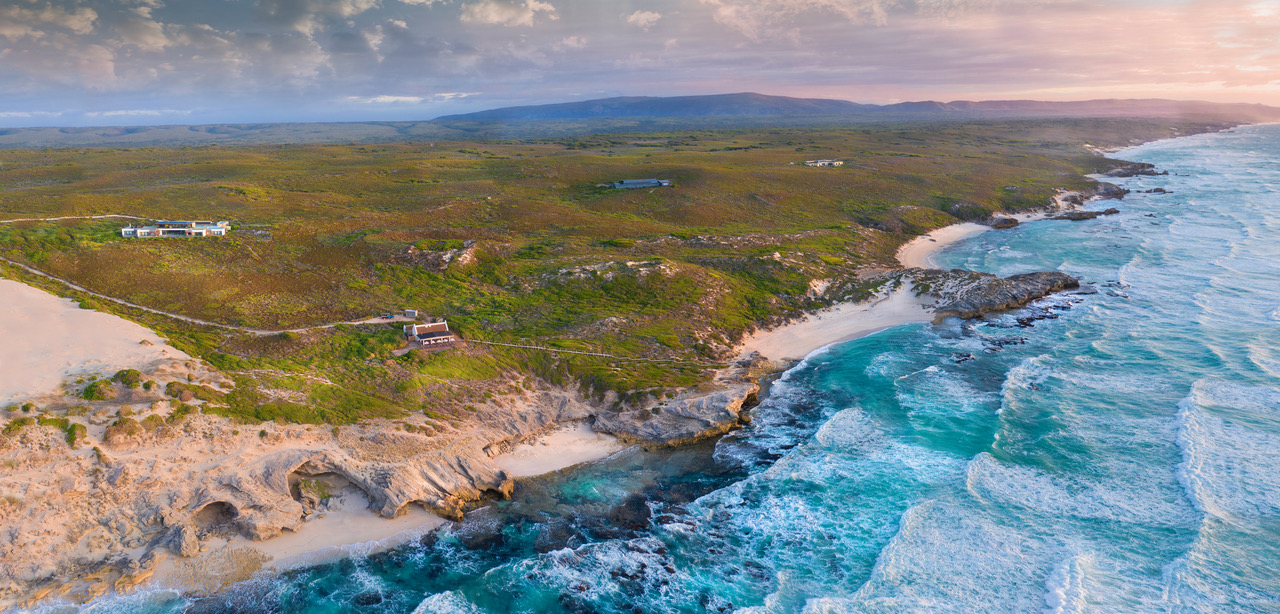

These juvenile green turtles were found by the team while patrolling on the quad bike. Amigo and Zelena were in a bad way and were suffering from a number of health challenges, including malnutrition and dehydration. Both Turtles were rushed them to the aquarium in Cape Town, where a team of specialist vets saved them. The turtles were stabilised with fluids, underwent CT scans and had a full blood workup. We are grateful to the Two Oceans Aquarium Foundation’s Turtle Conservation Centre team, whose expertise saved Amigo and Zelena. Under specialist care, the turtles began to thrive and were declared fit to be released back into the Southern Cape Ocean.
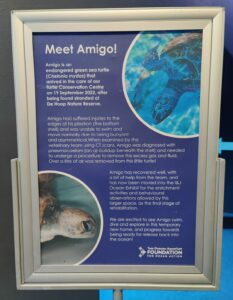



The official release day had arrived, and the atmosphere was filled with excitement and gratitude. Our friends from Cape Nature Rangers, who have long supported the rescue of turtles, gently lifted Zelena and took her down to the water's edge. She took a deep breath, a few strong flipper movements, and swam into the breaking waves and under the surface. Proud supporters of the Turtle Conservation Centre and adopters of Amigo, Ed and Anka Zeeman, owners of Morukuru Family and founders of the Morukuru Goodwill Foundation, carried Amigo down to the water. He was eager to join Zelena, following her example as he quickly swam under the surface. As they swam past the backline, a pod of common dolphins surfed passed, welcoming Amigo and Zelena home.


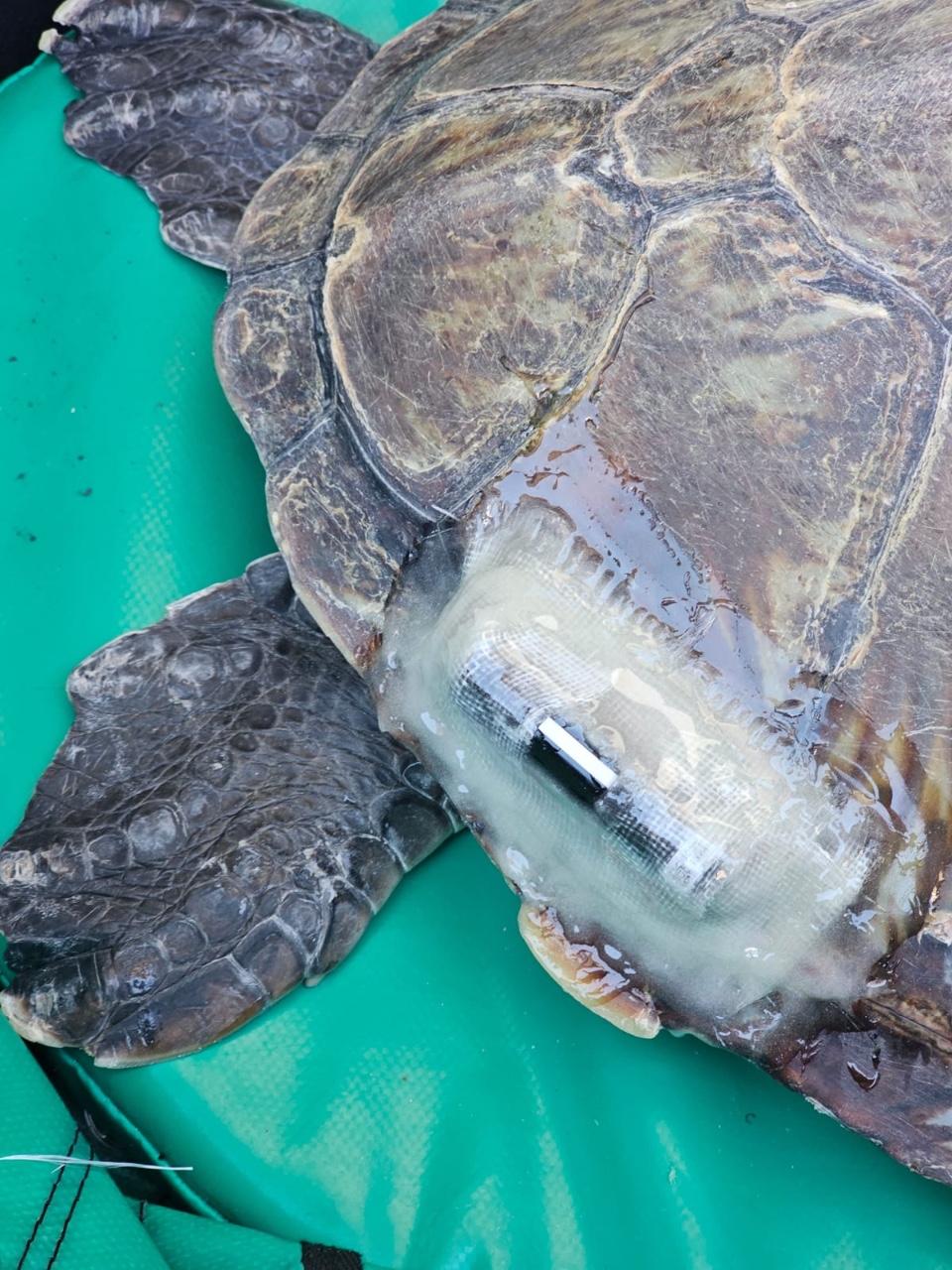

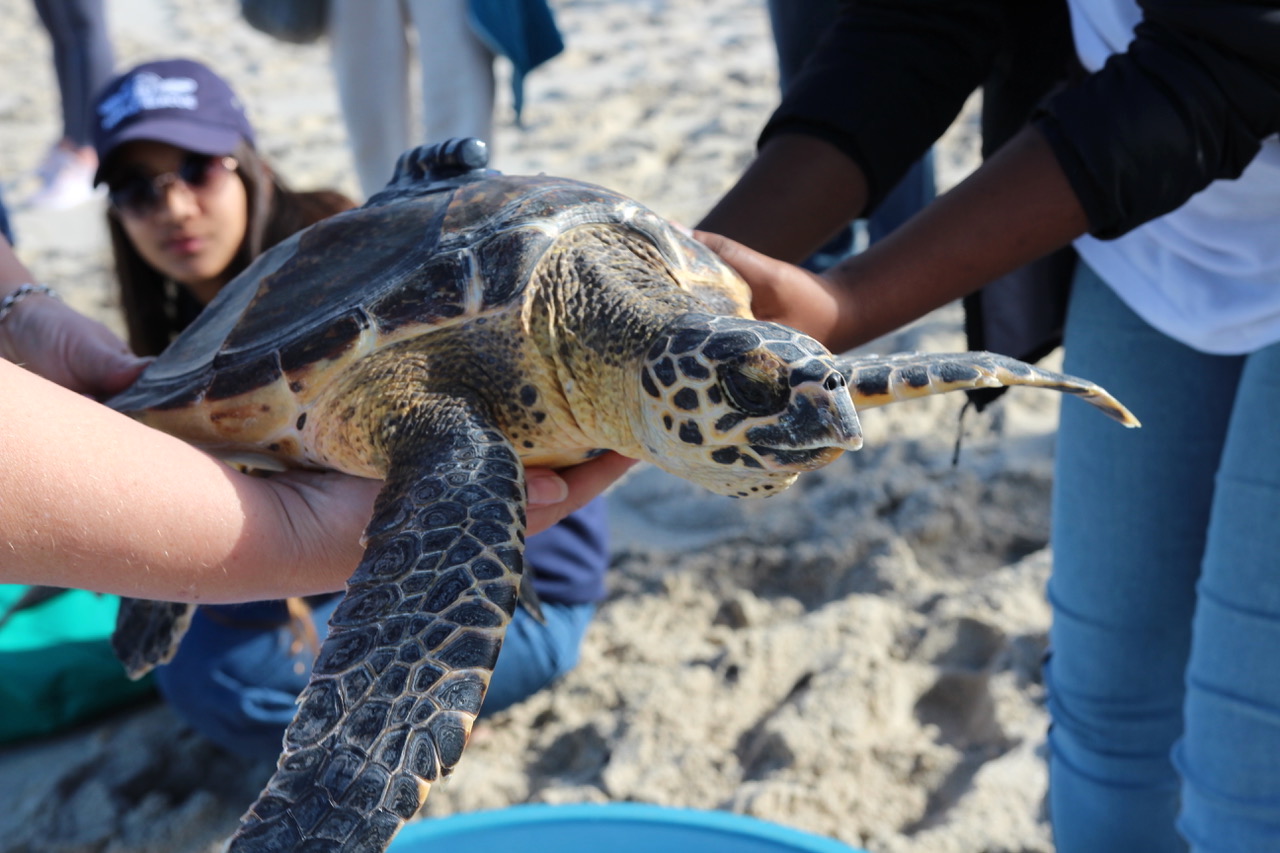

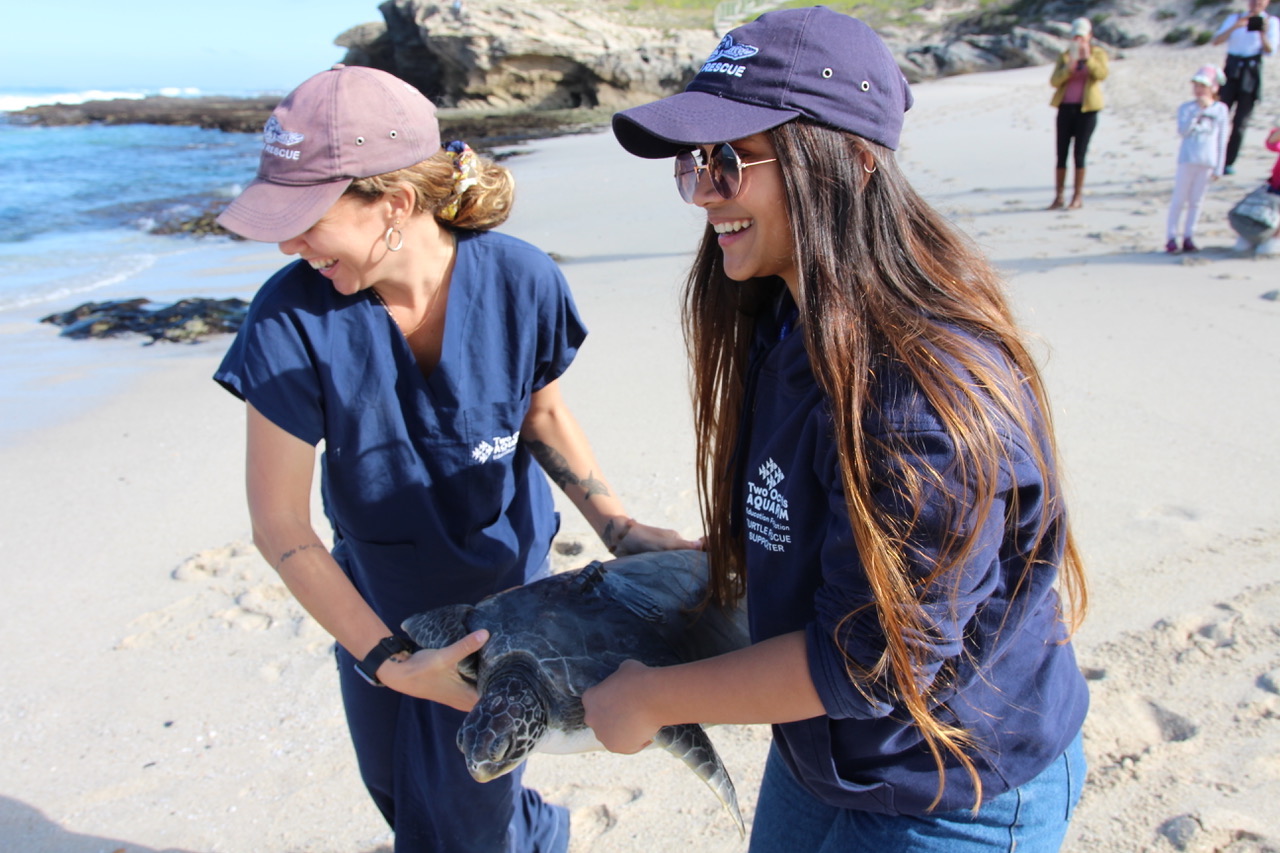







This trial release went incredibly well and confirmed that the release programme could comfortably continue in the De Hoop MPA. Guided by initial research, the team set clear guidelines to determine the specifications for future releases. Juvenile or young green and hawksbill turtles would likely explore the coastal waters, making them the ideal candidates for research in a location like De Hoop.
Talitha Noble, the Conservation Manager at the Two Oceans Aquarium Foundation’s Turtle Conservation Centre, told us about the next project involving three turtles. “Learning from our time in De Hoop, we selected three more turtles for the second release. Two hawksbill turtles (Siriti and Amber) and one green turtle (Coral) were cleared by the vets and matched the specifications of which turtles we want to release in De Hoop.”
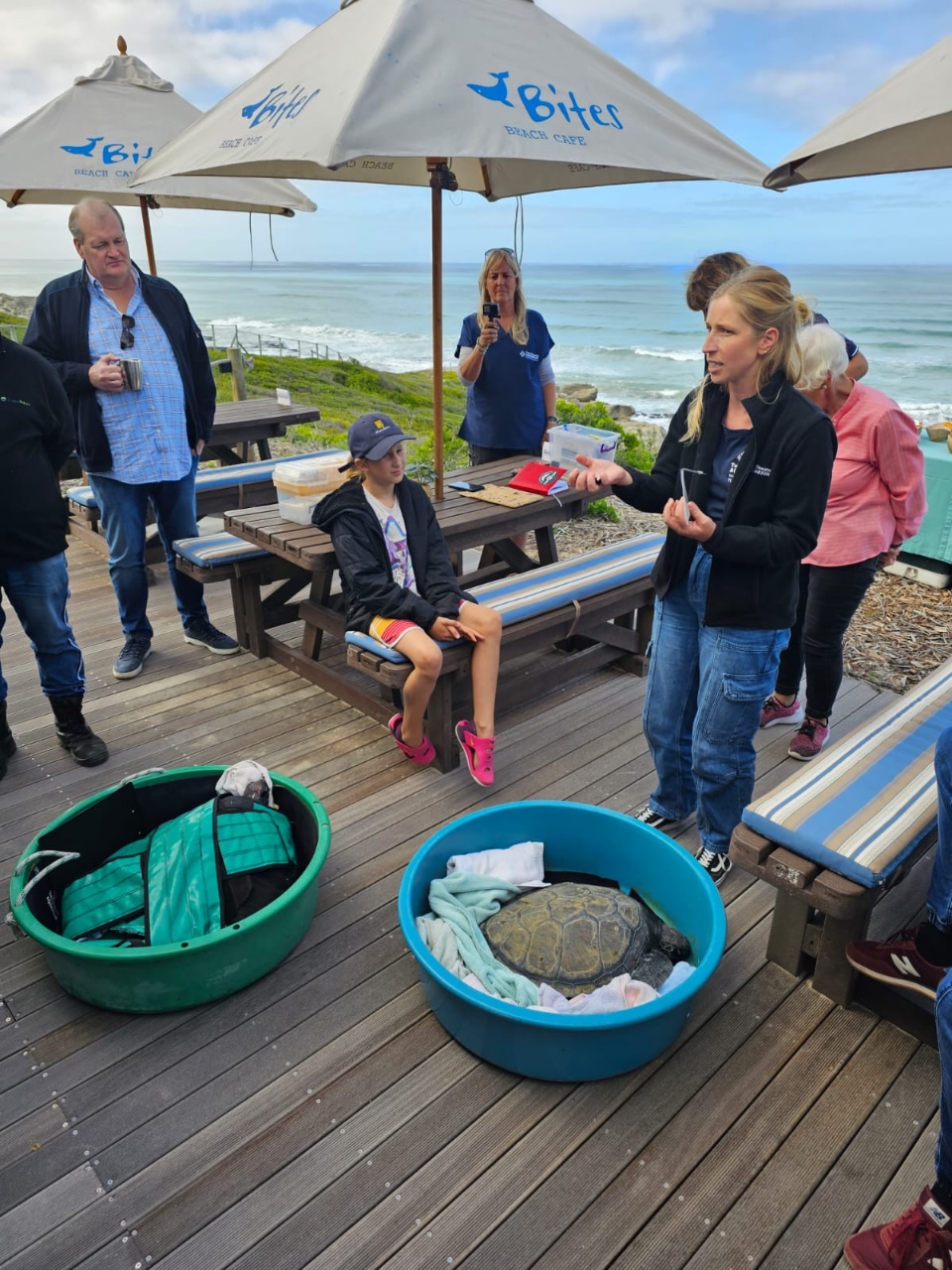

We are proud to confirm that the team celebrated three more successful turtle releases. Every turtle released back into the ocean is equipped with acoustic tags, and the MPA has six receivers meaning that marine experts will gain invaluable insight into the coastal movement of these sea turtles and their use of the De Hoop coastline.


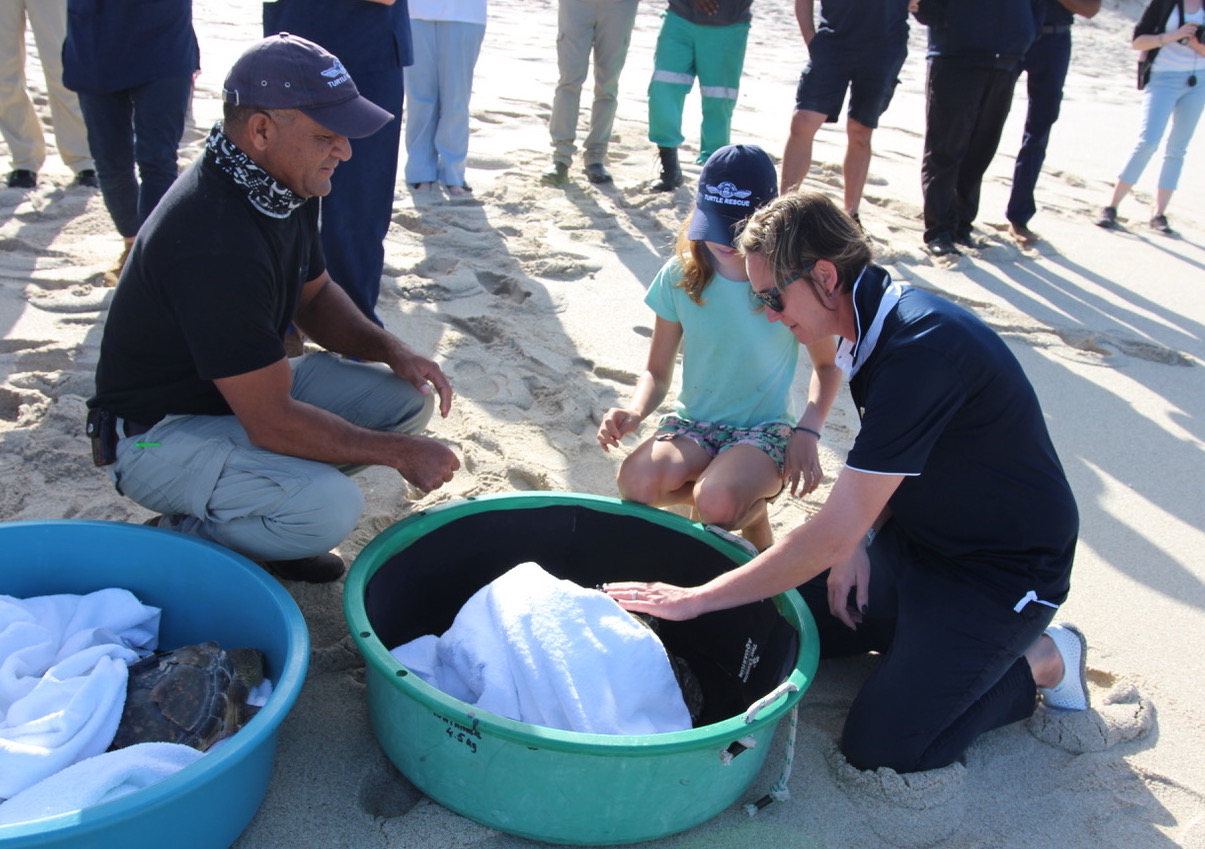



Morukuru Family de Hoop is excited to support turtle and wildlife conservation efforts through our partnership with the Two Oceans Aquarium. By joining forces with this amazing organisation, we aim to make a lasting impact and promote awareness about the plight of sea turtles. Morukuru Family and Morukuru Goodwill Foundation have sponsored and implemented informative turtle information boards at Koppie Alleen and are aiming to establish comprehensive systems to assist in their conservation. We are also planning to create opportunities for our guests to actively participate and make a difference in the De Hoop Nature Reserve, just as they do able to do with our "Safaris with a Purpose" initiative in Madikwe.
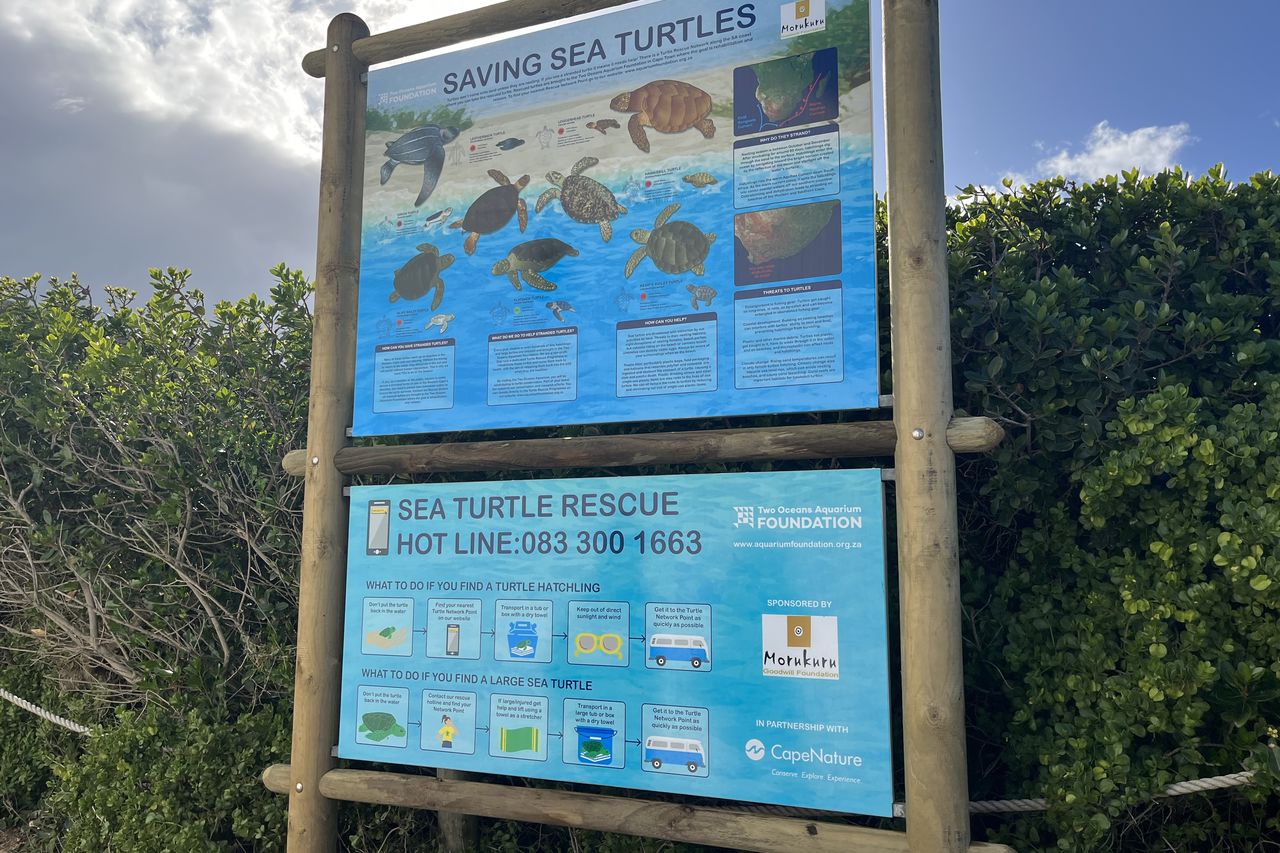



Why De Hoop is a perfect turtle release site – research potential
Declared an MPA in 1985, the value of De Hoop’s marine environment has been recognised for some time. More recently, though, the secret of De Hoop’s magic lies in what it has to offer turtle conservation along the southern coast of South Africa.
At first, there were occasional aerial sightings of foraging turtles in the coastal seagrass beds of De Hoop, followed by photos of these turtles spending time in the surf zone, and eventually stranded turtles washing up in the shallows. It became clear that turtles are regularly spotted in this area. In the last eight years, the Turtle Conservation Centre has received seven live green juvenile/sub-adult turtles from De Hoop, with the beloved Bob as the most well-known.
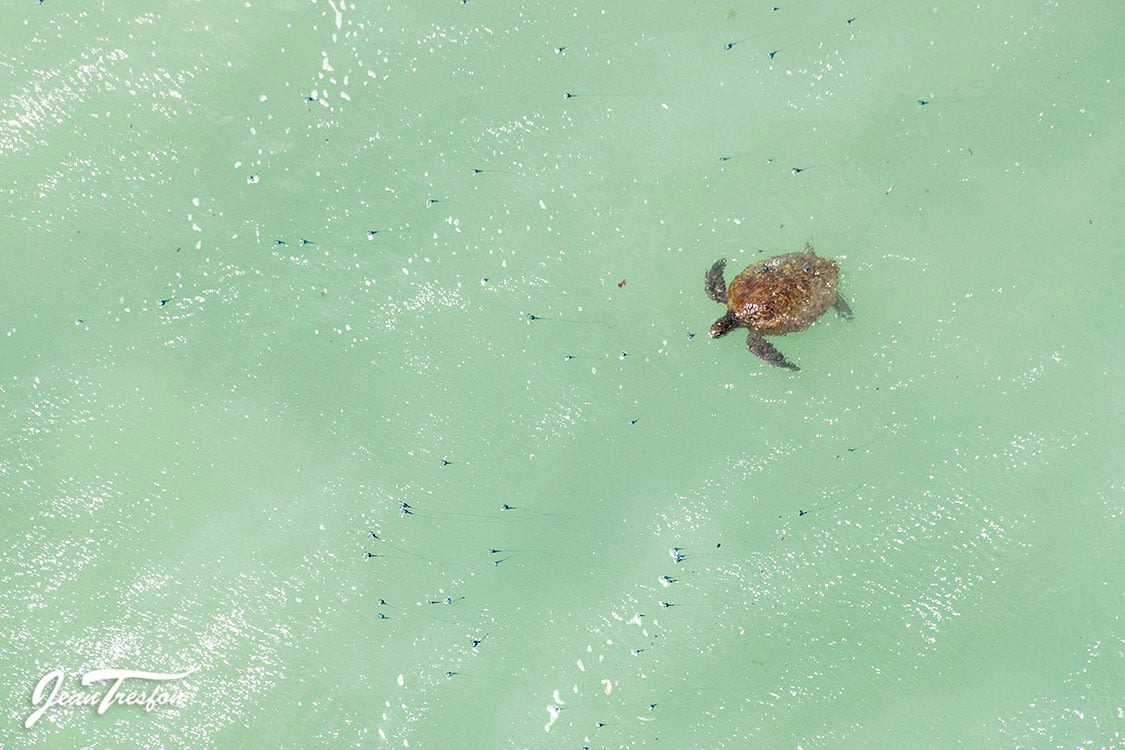

“One of these turtles, Litchi, was rescued from De Hoop in February 2021 and released off Cape Point 11 months later with a satellite tag. She headed straight for De Hoop and is still there 17 months later!” noted Tracy Whitehead, Turtle Rescue Network Coordinator.




In partnership with the South African Institute for Aquatic Biodiversity (SAIAB)’s Acoustic Tracking Array Platform (ATAP), the Two Oceans Aquarium Foundation’s Turtle Conservation Centre fixes small, frequency-emitting tags on released turtles. All along the South African coastline, there are acoustic receivers that capture these frequencies when the animal swims past.
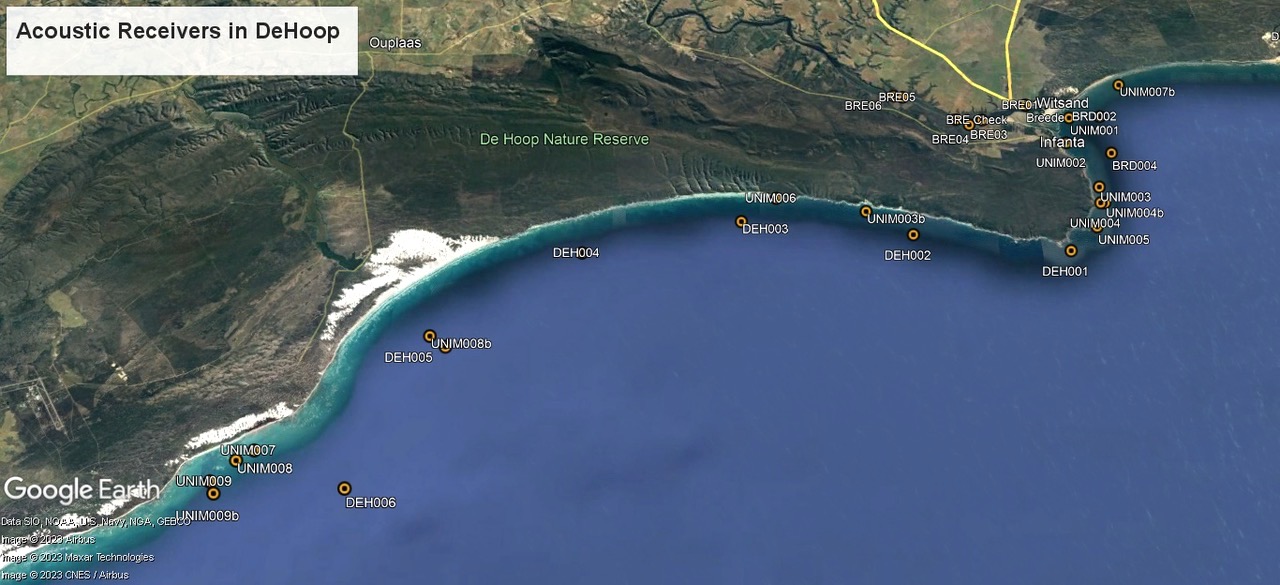

One of the main benefits of De Hoop for turtle conservation is that, in this area alone, there are six active receivers. This is hopeful for future releases, as green and hawksbill turtles such as Amigo, Zelena, Coral, Siriti, and Amber tend to be coastal in the late juvenile stage. A coastal array of receivers is therefore likely able to pick up their movements successfully.
“In the years to come, we will hopefully gain invaluable insight into the coastal movement and behaviours of these sea turtles and their use of the De Hoop coastline,” said Talitha
